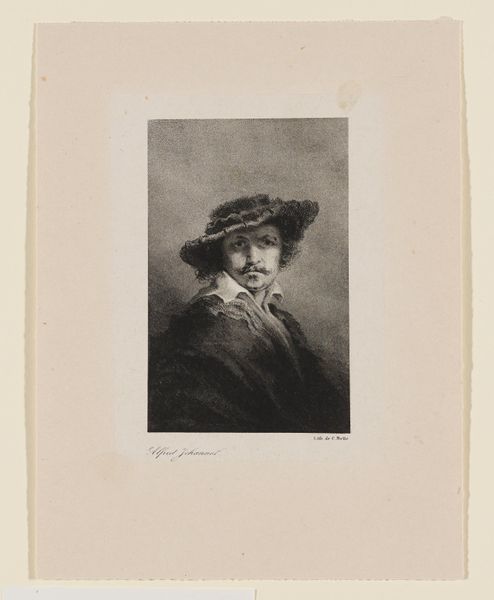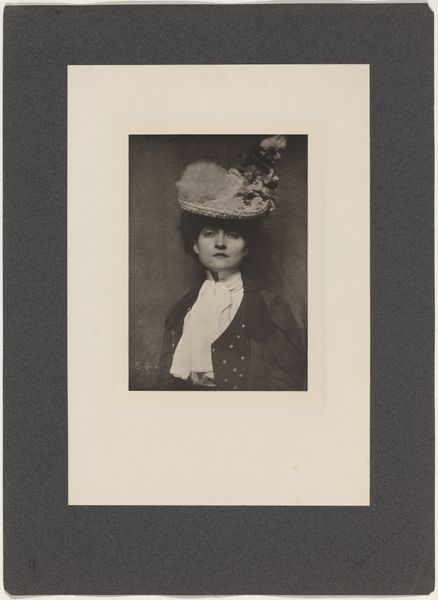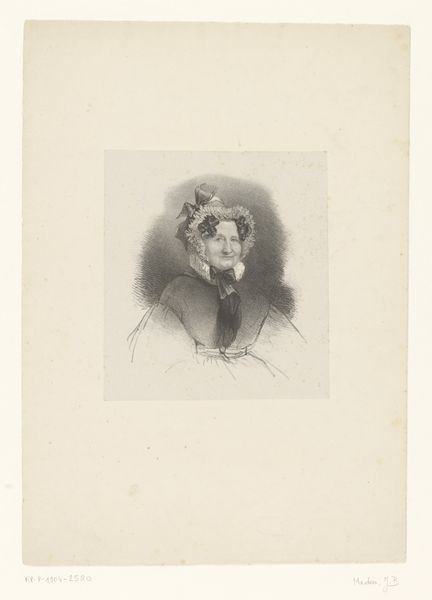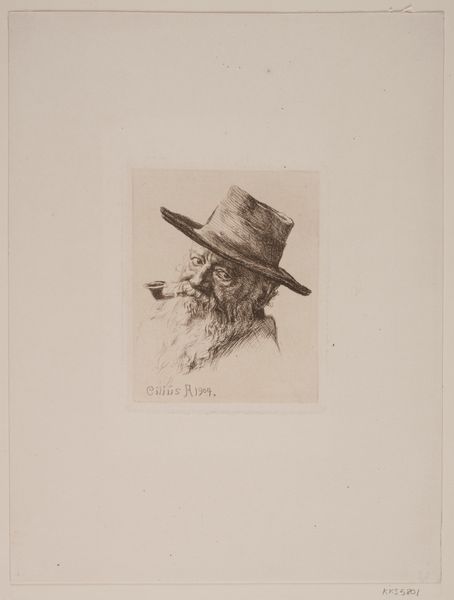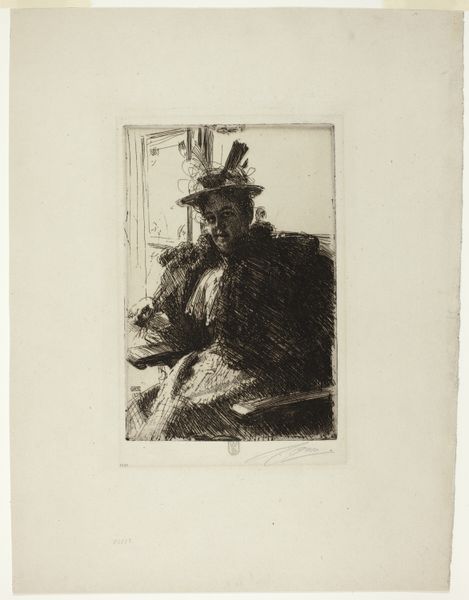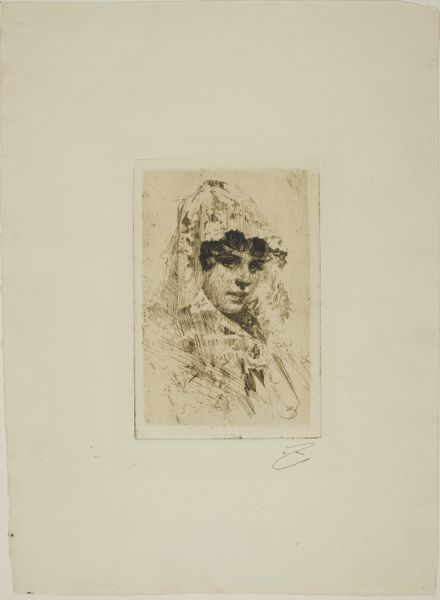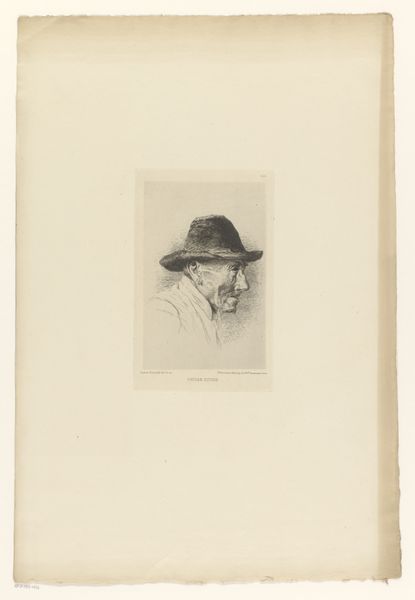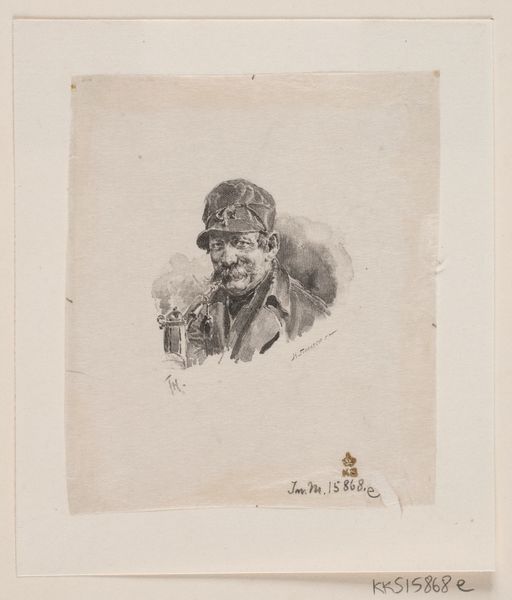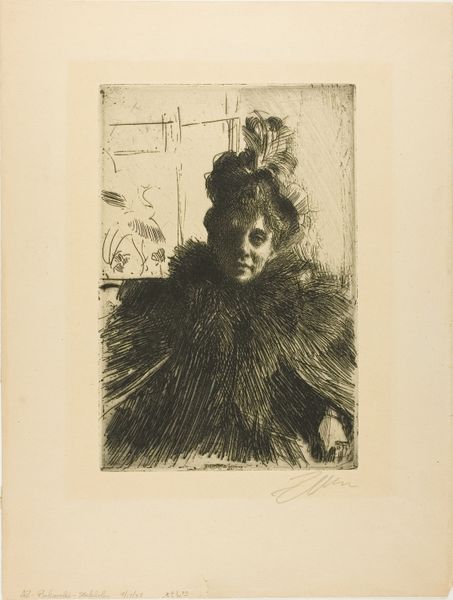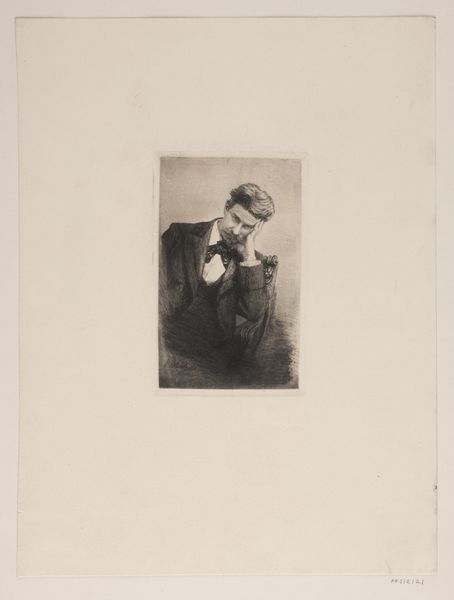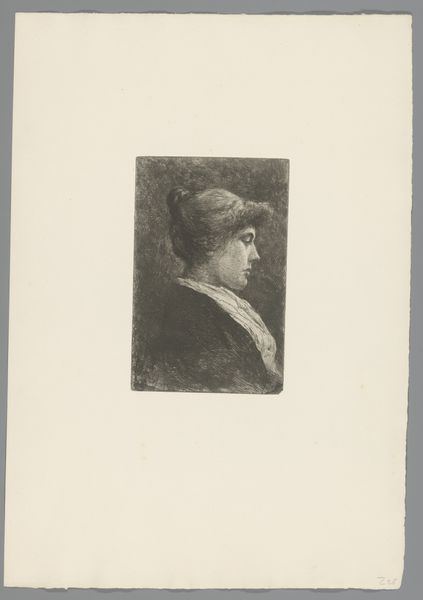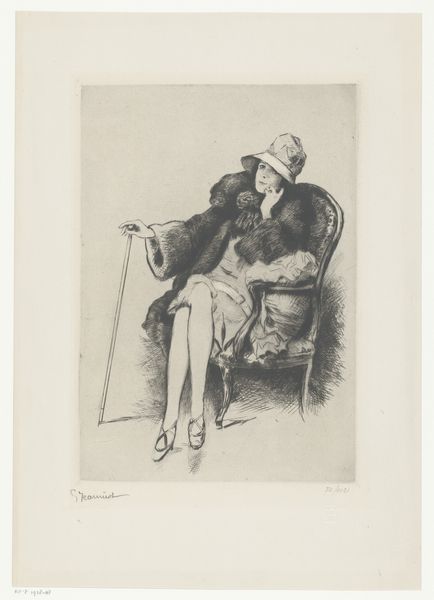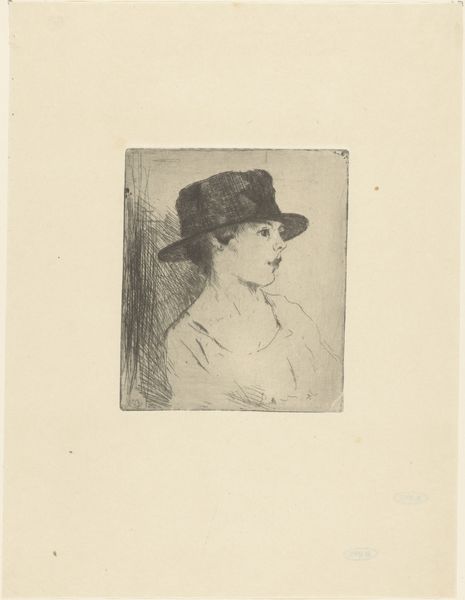
Dimensions: Plate: 6 15/16 × 4 3/4 in. (17.7 × 12 cm) Sheet: 12 15/16 × 10 1/4 in. (32.9 × 26 cm)
Copyright: Public Domain
Curator: Here we have Anders Zorn's "Self-Portrait" from 1916, currently held in the collection of the Metropolitan Museum of Art. Editor: He looks incredibly cozy. All that fur! The contrast between the soft texture of the coat and the hard lines of the etching technique is quite striking. Curator: Zorn was known for his mastery of etching, wasn't he? It's remarkable how much detail and nuance he achieves with such a seemingly simple process. This piece offers an interesting insight into the public image Zorn crafted for himself. He was, after all, a celebrity in his time. Editor: Absolutely, and etching would have been a key medium for disseminating that image, cheap and reproducible, especially in comparison to painting. It raises questions, though: How did Zorn, as the creator, relate to the artisan processes in printing? Was he pulling the press himself, or leaving it to workshop employees? This matters because of the power inherent in owning and directing that work. Curator: That’s an insightful point. The implications of the etching’s creation extend to its reception too. Think about the context in which this portrait was made; 1916, amidst the First World War. Perhaps it served to portray an image of resilience or status at a turbulent time. Editor: Or escape? Note that fur. It’s an object steeped in privilege, in trade routes and resources extracted under potentially exploitative labor conditions. The man appears self-assured in this display of wealth through this image-making technology, but maybe there's also an ambivalence. The lines of the etching suggest a fleeting moment rather than something permanent. Curator: It seems he uses the materials and social associations to his advantage here. And I appreciate that the somewhat obscured hat keeps us looking to his eyes, and subsequently to the sharp line of the face, which tells more than the fur alone. Editor: Yes, the controlled lines defining the features, like his gaze and his tightly pursed lips, create this tension, it is interesting how the image is so controlled by materiality. It shows how the choice of process can enhance the sense of a subject’s complex relationship to both labor and material, beyond a simple portrait. Curator: It gives you quite a bit to think about, even though the image feels like a casual glimpse. Editor: Definitely; and Zorn’s technical prowess and careful manipulation of image really speak to how intertwined materials and their social meanings always are.
Comments
No comments
Be the first to comment and join the conversation on the ultimate creative platform.
